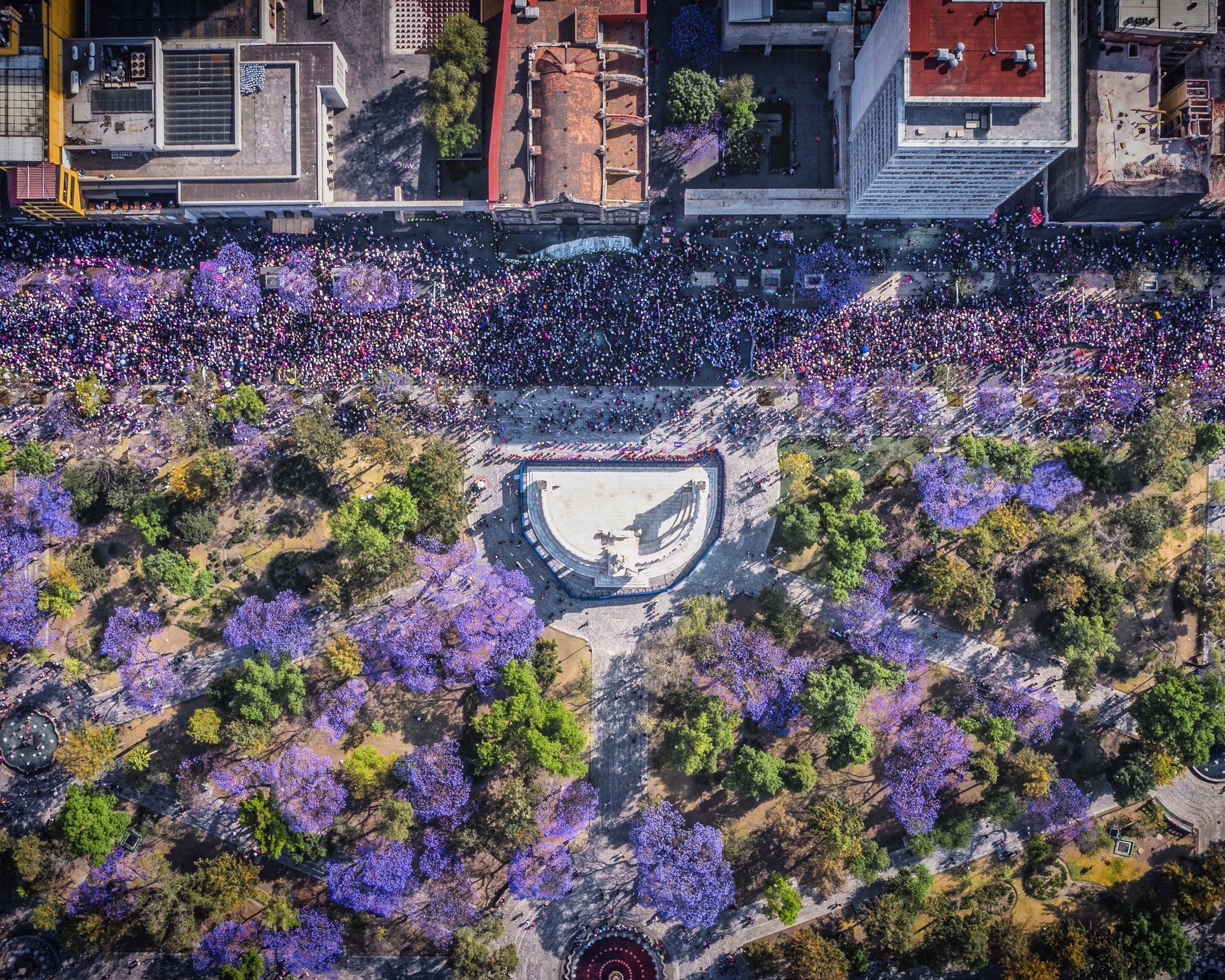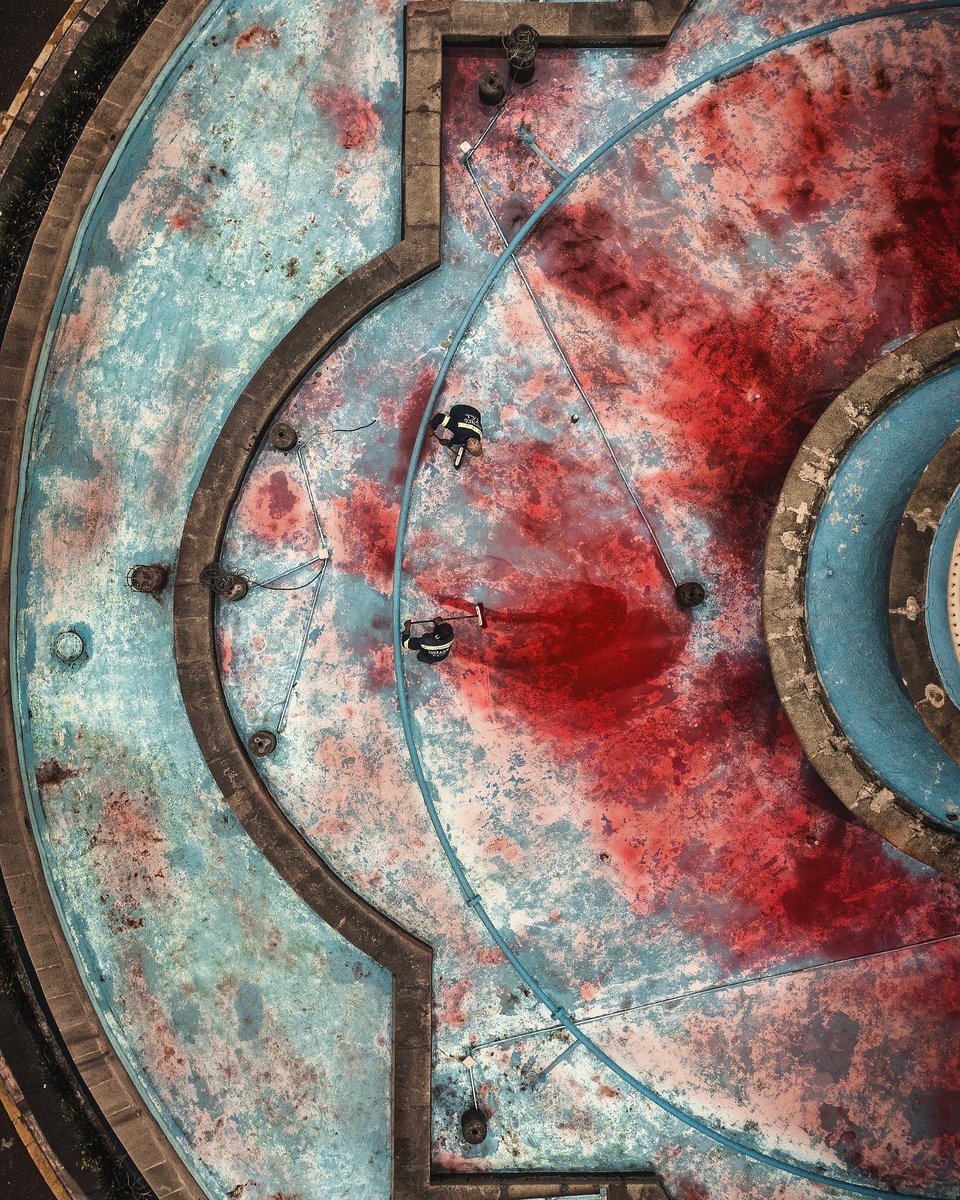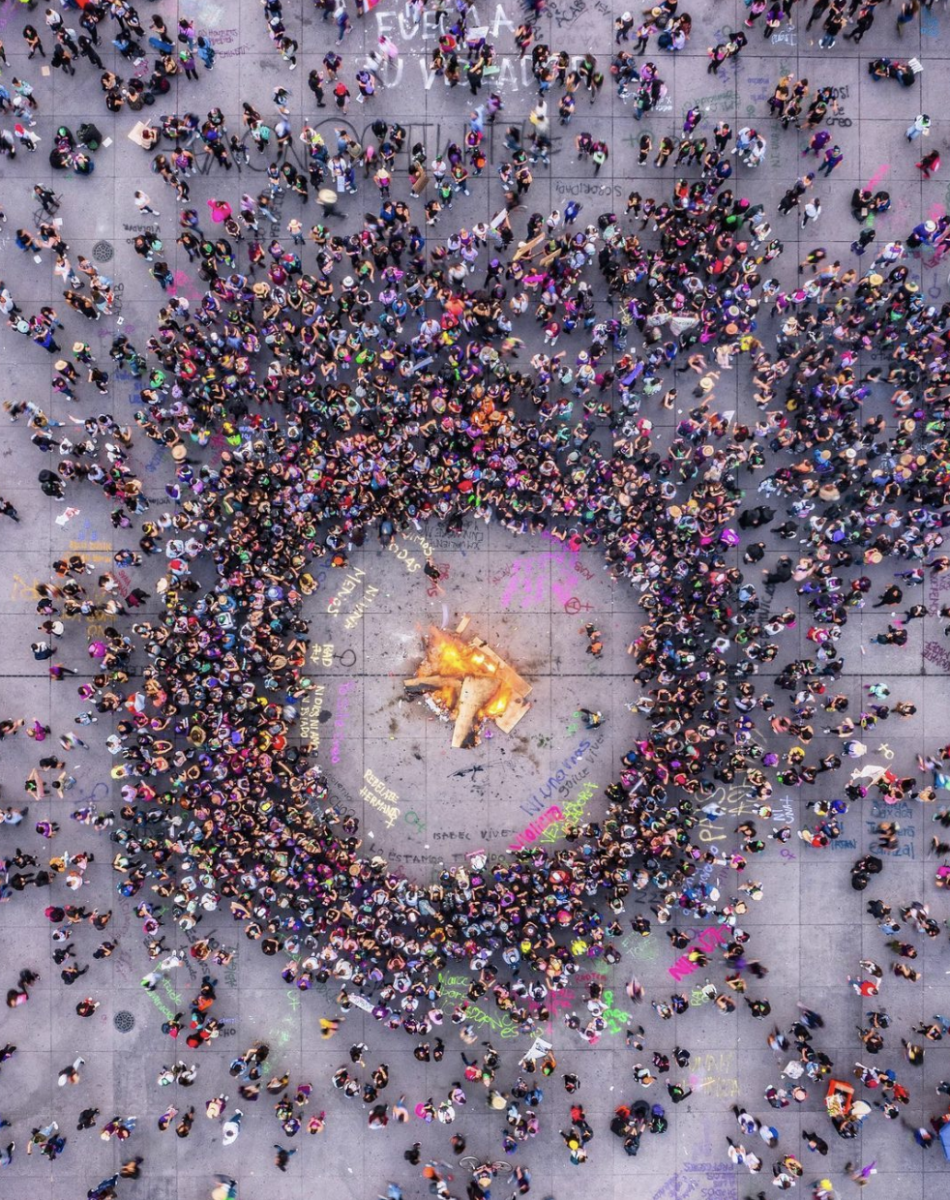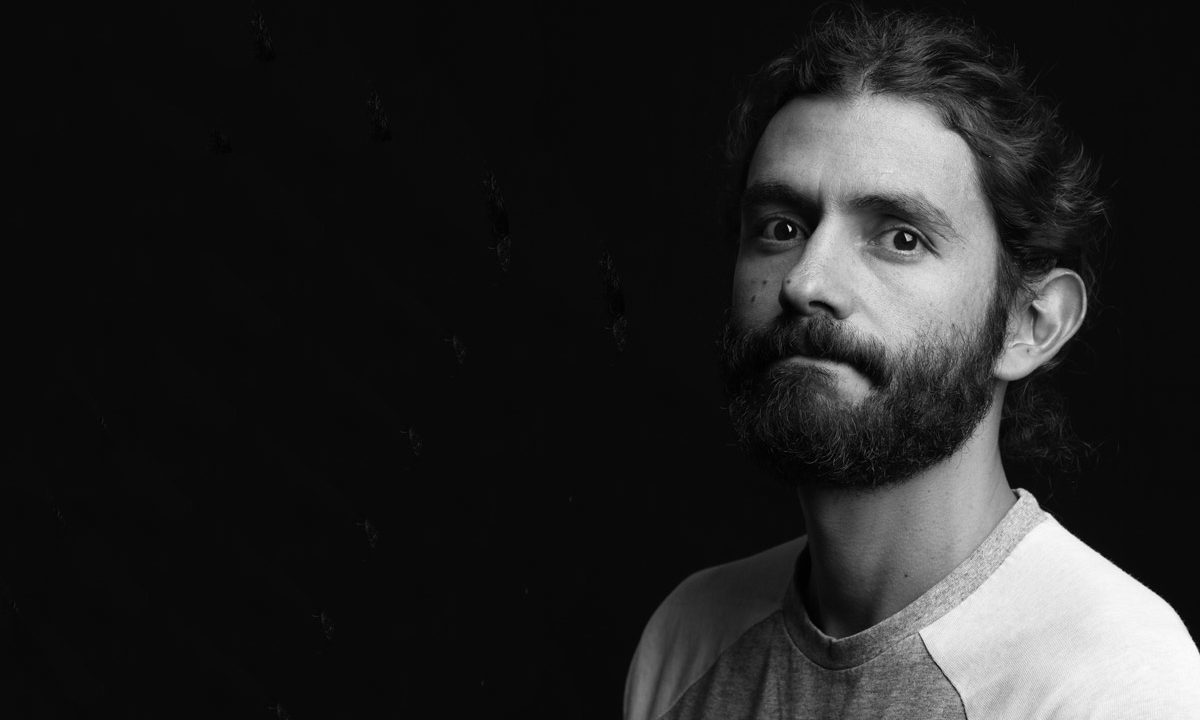Santiago Arau Pontones’ bird’s eye view: On evoking Mexico’s femicides and the art of emotion
In 2021, around 81,000 women and girls were killed on the basis of gender globally — of the 81,000, about 45,000 were killed by family members or intimate partners. As the years progress, this number only increases. In Mexico alone, there were 3,155 murders of women from January to October of 2022 — making up an average of 10 women killed per day.
These murders have gone largely unnoticed by the Mexican government for years, human rights advocates say. This lack of attention prompted hundreds of women to drop everything and gather in unity on March 8, 2021, to draw attention to the issue of femicide and speak for the thousands of voiceless women murdered in Mexico.
During the protests, Santiago Arau Pontones, a Mexican photographer, director, and cinematographer, grabbed his camera and made it his mission to capture the streets of Mexico City. With 20 years of experience under his belt, Arau documented the International Women’s Day crowds using the techniques that have helped him stand out as a documentary photographer: drone pictures and aerial perspectives.
Storybench caught up with Arau to talk about why he chose this aerial approach and how he conveyed emotion without showing facial expressions.
The interview was conducted in Spanish and translated into English.
"Today we name all those who are missing, those who cannot march with us, those who were taken from us by patriarchal violence. They all have a name, a face, a story."
“Hoy nombramos a todas las que nos faltan, a las que no pueden marchar con nosotras, a las que nos arrebató la violencia patriarcal. Todas tienen un nombre, una cara, una historia.”
– Santiago Arau Portones
What influenced your decision to capture this movement from an aerial perspective?
I’ve always done projects using a drone, so this was not my first time doing it. During the month of March, Mexico City is full of these wonderful trees called jacarandas, and of course, as many know, women represent themselves with purple colors during their marches. I put these two things together before even going out there and thought I was going to only capture aerial photos where these trees were present, but I ended up doing it as a whole because I saw there were a lot more messages that could be told from just one perspective.
It’s very interesting because the idea of having the trees and capturing that with all of these women dressed in purple was symbolic to me as a way to send the message out there that on this day, that is the March of the 8th of March, women were being hugged and accompanied. There’s a sense of unity that takes place, with these trees surrounding the crowd and how their colors mesh together. My idea here was to express this feeling of having each other’s backs, standing with each other, just as trees and nature stand and lean on each other. From that one idea, everything else just came to me as I walked the streets and saw what I wanted to capture. But it’s funny because everything seems to have unity even if it’s different, which is exactly what I wanted.

How do you believe that emotion is being evoked here?
Emotion is something that will be present no matter the perspective it is being looked at. It can be conveyed through light, movement, time of day, etc. That being said, it is important to think about what emotion you want to give people, and that is where it becomes difficult honestly. There is something very special about the aerial view and that is that it gives you a perspective on the dimension, something that isn’t always attainable with any other type of camera angle.
Dimension is something that makes individuals stop and look at something for longer because it can be very impactful. In the case of this photo essay, dimension is very present by looking at how many women were in the streets supporting each other. You can’t see them individually, but you can see a lot of purple dots that signify this unity, and because they continue on out of the frame, you can tell there are much more that aren’t captured but are certainly present.
Apart from dimension, I would say I relied on colors to evoke emotion in these pictures. I can’t necessarily show the facial expressions from aerial perspectives, so color is something I chose to signify the different facial expressions you would see if I had gone and taken portraits.
I used purple to signify women of course, red which was present in the fountain photo signifies anger and impotence for the impunity of these femicides, grey to signify the idea of ‘missing’ and death, and so on. It is important to pay attention to those details for these aerial perspectives that will eventually bring out those emotions otherwise being missed by drone cameras.


Seeing that these photos are different from one another, how were you able to hold the same meaning for all to create unity?
I think more than one meaning, these photos each hold a different meaning that is being explored. What is the same is the story. A story is made up of different meanings in a way, so each different photo is trying to portray a different idea and they all connect to each other to create the overall narrative.
Femicides in Mexico have more to them than just a murder from a family member or loved one to its victim. It’s about a failed system of culture that has been created by individuals in the country and sadly tolerated by the governmental system. There is a lot to it, it’s a very complicated matter. This photo diary highlights some, not all, of the different complications that make up a fraction of the problem that is being faced.
In showing fires light up, that is trying to portray the meaning of impotence, forcing women to resort to lighting things up to get a reaction from the fractured system. Documenting graffiti on the floor disappearing one day after the march shows the insensitivity and lack of respect the government holds for such movements. Individuals trying to scrape off the blood on the fountain portrays the urge of the country to silence women and keep them inferior. All of these different narratives make one big story on the idea of femicides and how it entails more than just a woman passing away.




Overall, why did you choose to document this as opposed to something else? What influences you when deciding to tell a story?
The main inspiration for this story was my mother. She is the one person I am most thankful for sharing my life with. I could never imagine something happening to her, so I feel for those who are in constant fear and I find it important to highlight their story and narrative. On this day, I didn’t want to capture a story that would spread fear to the women in Mexico, instead inspire them and honor them. Honor the women who were missing that day, who can no longer join the march each year, and whose lives were snatched by patriarchal violence. I wanted to do that through my ability to capture moments that spread awareness.
It’s important to portray a country for its beauty, but also for its darkness. This inspires me a lot because one would think that women should use this day to celebrate being who they are and for men to thank them for existing, but instead, they have to resort to using this day to voice their concerns about being who they are and how their safety is put to the test every time they leave their homes, it’s unbelievable.
I try to capture those moments and choose to tell those stories — the stories that encapsulate what makes up the Mexican culture, with its beauty and with its darkness. I try to capture the social movements that shape our country, our nature, and our way of being. It all depends on what I want to say and focus on.





